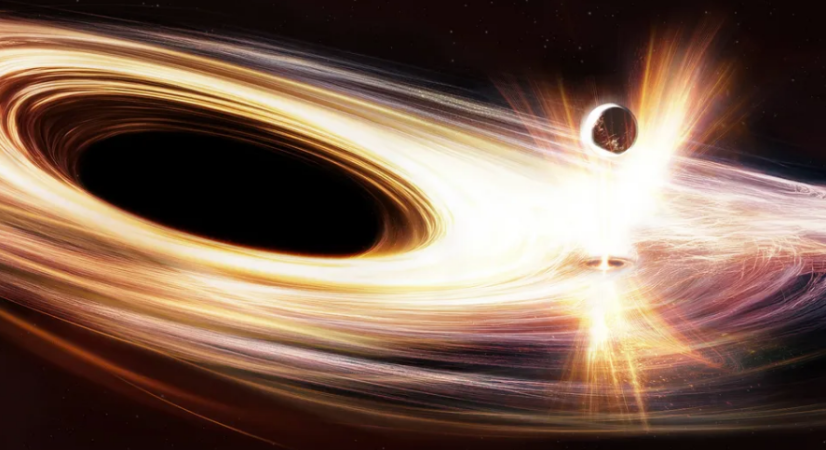We've all experienced waking up in a bad mood, but a newly observed supermassive black hole appears to be having an extraordinarily rough day. This formerly dormant black hole, located at the center of the galaxy SDSS1335+0728—roughly 300 million light-years from Earth—has erupted with the most powerful and prolonged X-ray outbursts ever detected from such a cosmic entity.
This event marks the beginning of the black hole’s active phase, in which it starts consuming nearby matter and producing quasiperiodic eruptions (QPEs)—brief but intense flares of radiation. The black hole, quiet for decades, now powers a region in the galactic core known as an active galactic nucleus (AGN), which the research team has named "Ansky."
Ansky's awakening was initially detected in late 2019, prompting follow-up observations by NASA’s Swift X-ray space telescope. By February 2024, astronomers began observing regular X-ray flares from Ansky, providing a rare opportunity to monitor the active feeding behavior of a supermassive black hole in real time.
According to Joheen Chakraborty of MIT, each flare from Ansky is ten times longer and ten times more luminous than typical QPEs, releasing energy one hundred times greater than what has previously been observed. These eruptions occur on the longest cadence ever recorded—approximately every 4.5 days—pushing current models and challenging prevailing theories of X-ray emission generation.
The team's observations were supported by the European Space Agency’s XMM-Newton mission, NASA's Chandra and NICER missions, and archival data from eROSITA. Despite the thorough monitoring, the cause of Ansky’s outbursts remains unclear. While QPEs are usually linked to black holes tearing apart and consuming stars, no evidence of such an event has been detected in Ansky’s case.
Erwan Quintin, ESA Research Fellow and X-ray astronomer, explained that researchers still have more theoretical models than actual data for QPEs and emphasized the need for additional observations. Previously, QPEs were thought to result from smaller celestial bodies being captured and devoured by larger ones. However, Ansky’s flaring pattern suggests a different mechanism at play.
These repetitive bursts may also be associated with gravitational waves, which could be detected by ESA’s future space-based observatory, the Laser Interferometer Space Antenna (LISA), set for launch in 2037. Quintin noted the importance of X-ray observations in complementing gravitational wave data to help solve the mystery behind the behavior of massive black holes.
This groundbreaking research was published on March 11 in the journal Nature Astronomy.

